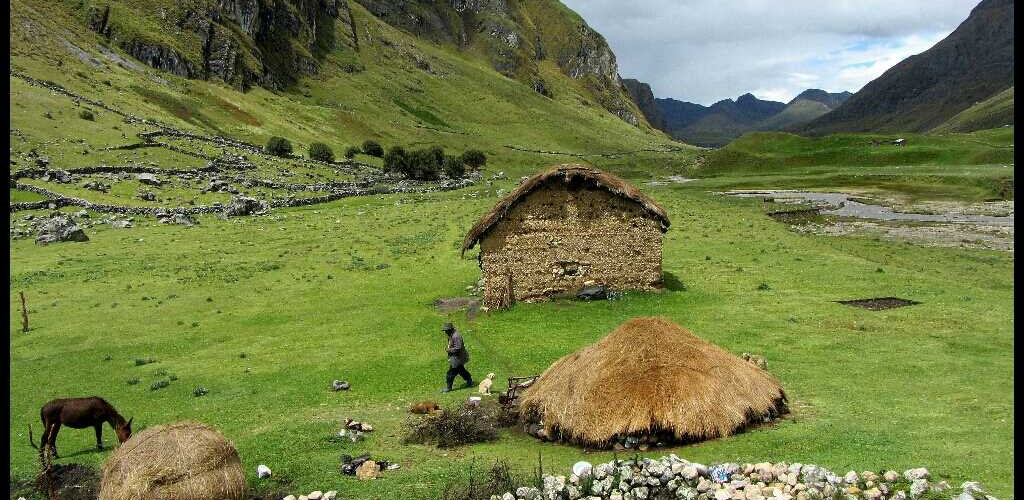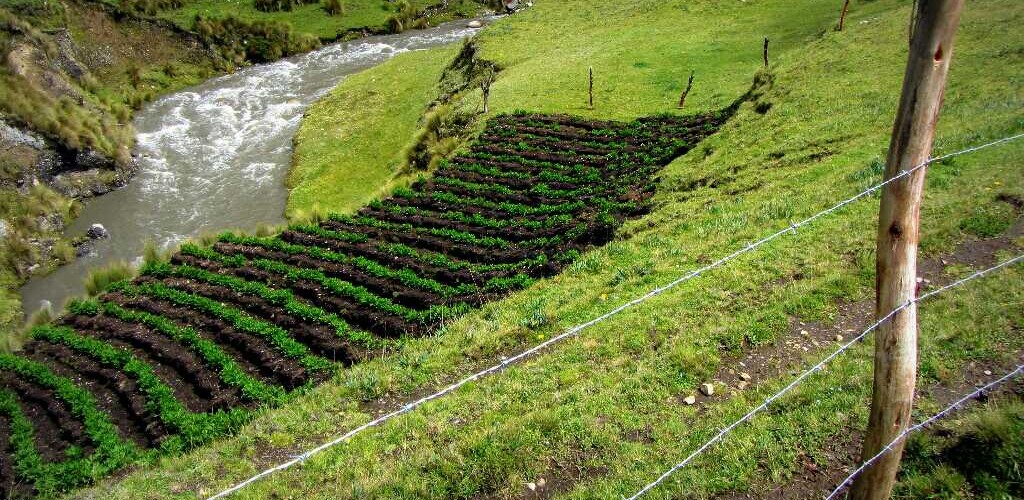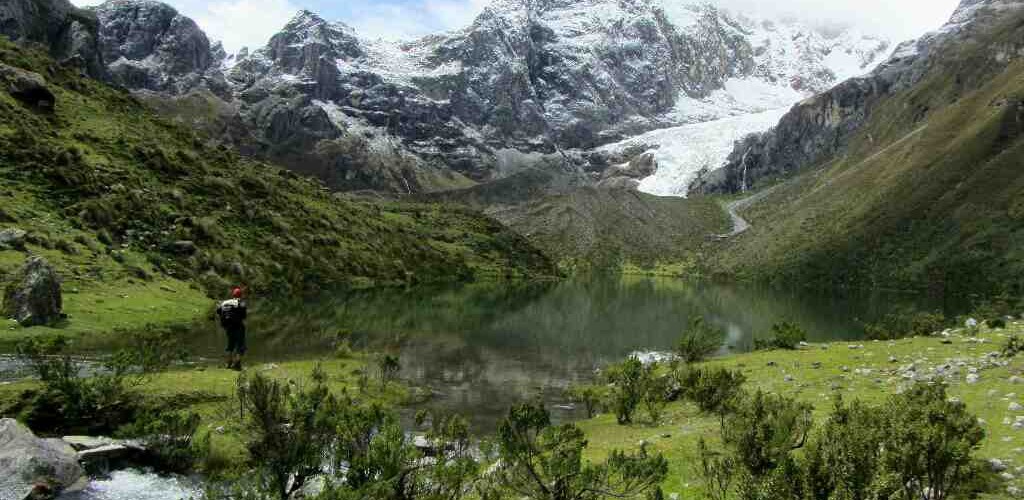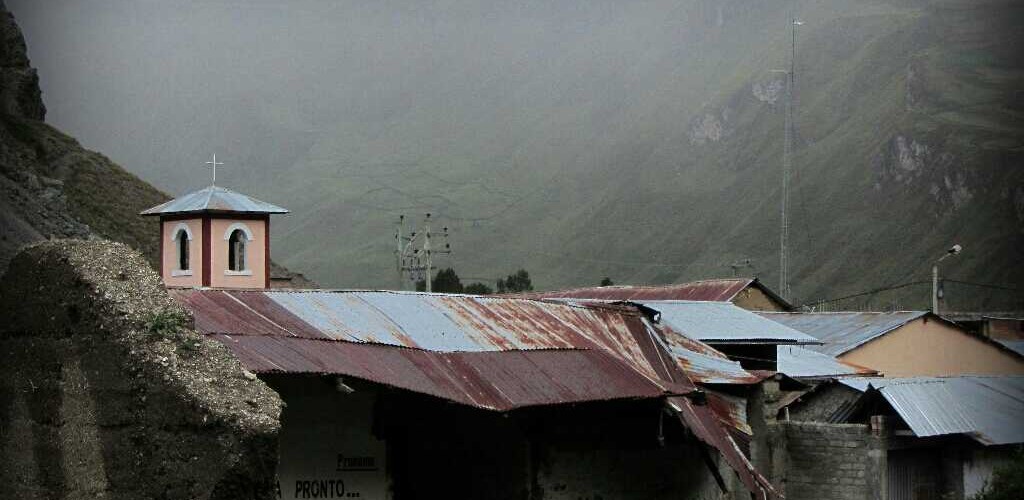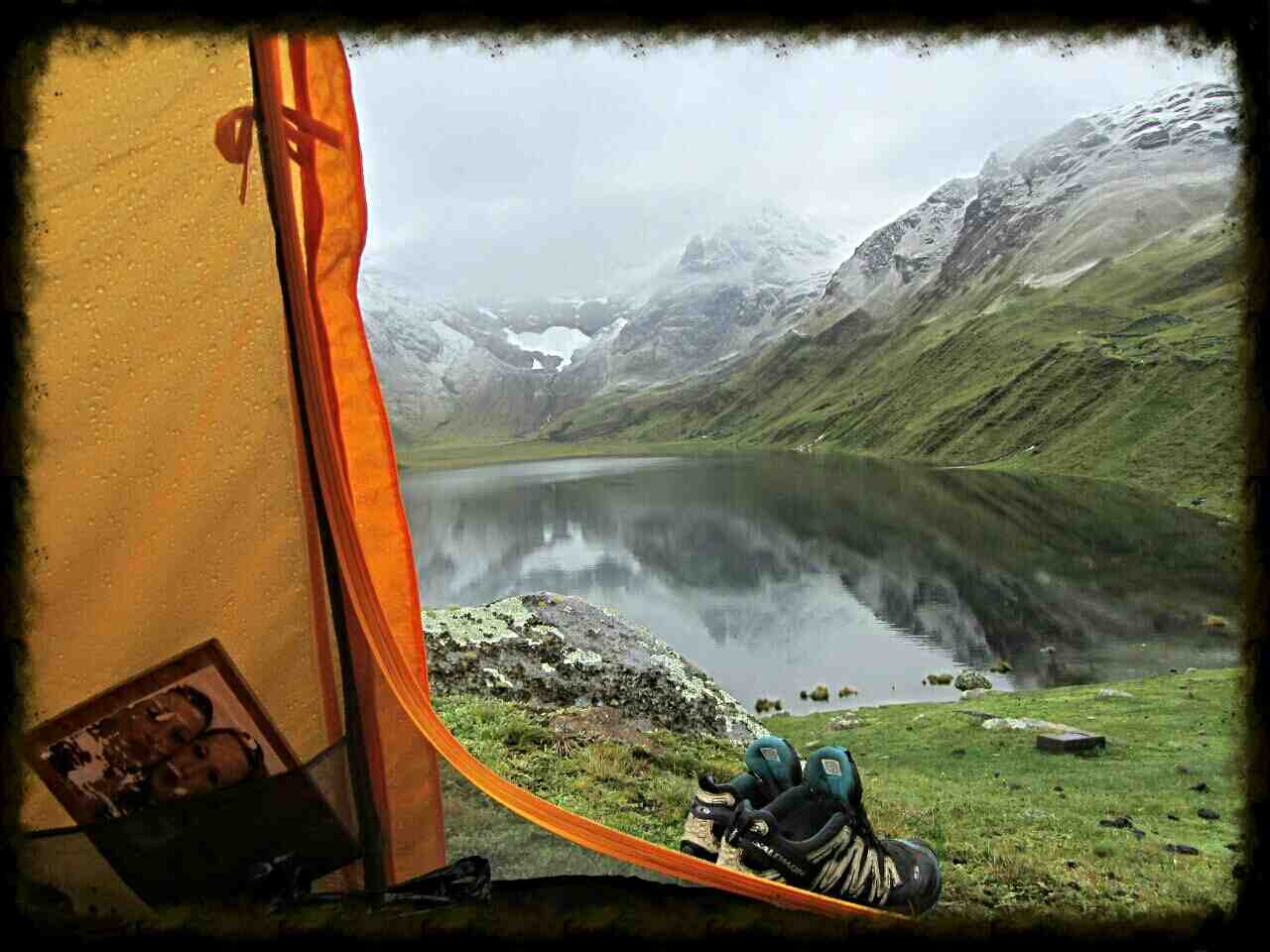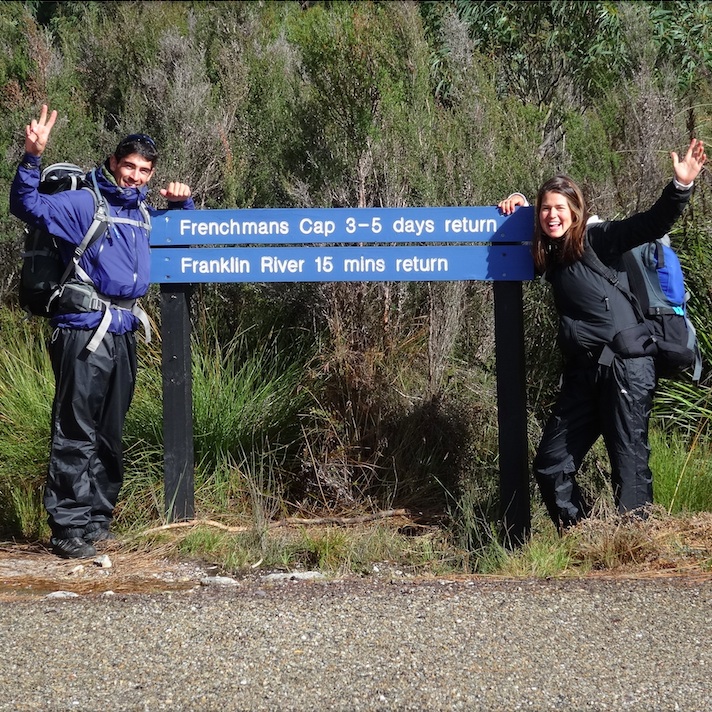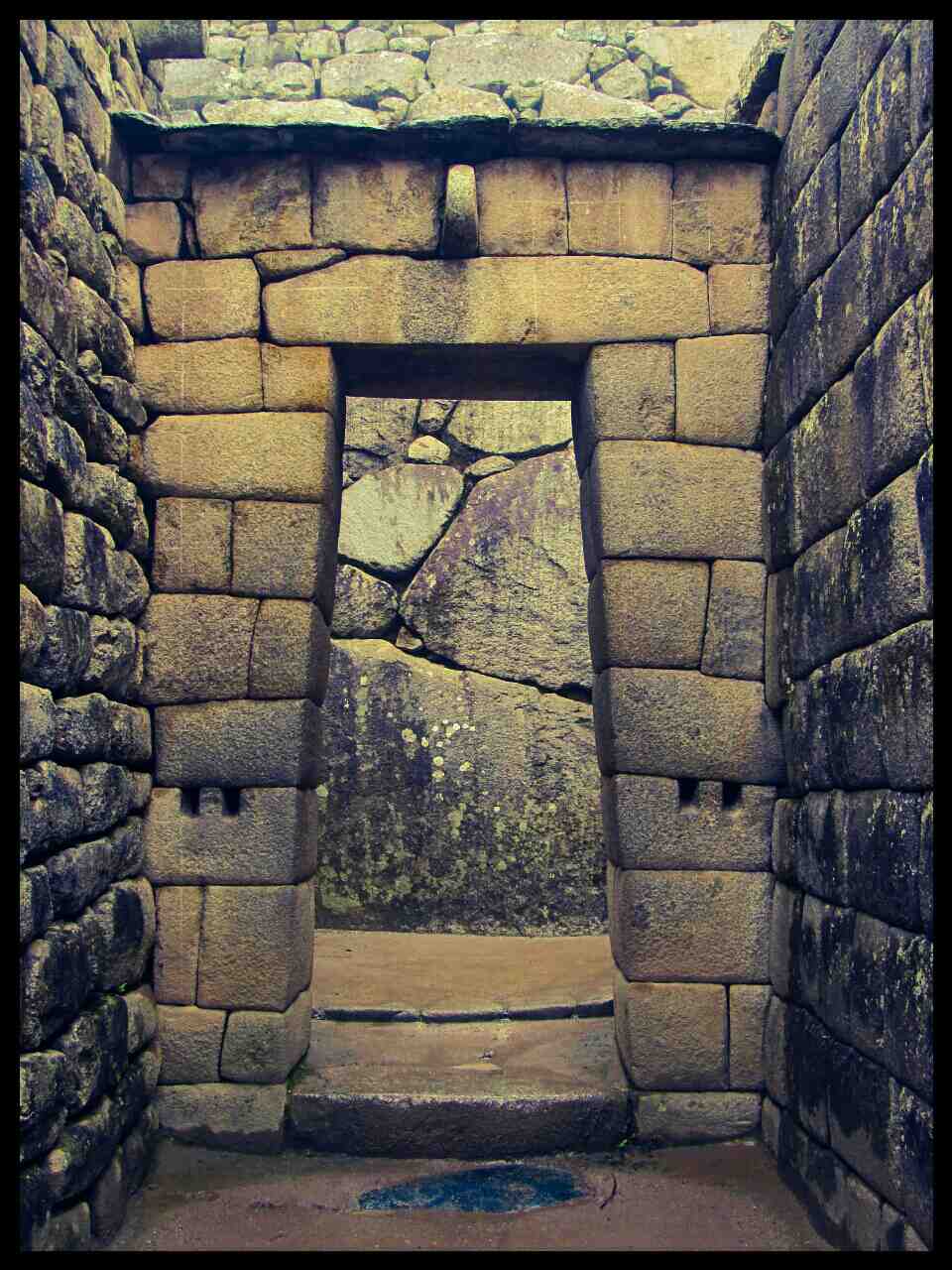How I got there:
 Estenio, the family’s father I stayed with in Huánuco, suggested me to visit his childhood village: Choras. Nearby is the pre-Inca archeological site of Garu, that dominates the top of a 3900m hill. However archeological sites and monuments are not my unique interests here.
Estenio, the family’s father I stayed with in Huánuco, suggested me to visit his childhood village: Choras. Nearby is the pre-Inca archeological site of Garu, that dominates the top of a 3900m hill. However archeological sites and monuments are not my unique interests here.
Deeper in the “Sierra” is the second highest mountain range in Peru: The Cordillera Huayhuash and its highest pic: the Yerupajá at 6635m.
We are in January and even if I’m in the Southern hemisphere it’s the rainy season in the mountains. It means there are daily showers every afternoon.
Before reaching Queropalca ( Eastern Gateway to the Cordillera Huayhuash), all of the villages I crossed have an elevation situated between 3400 and 3800m. This characteristic is important because our body needs at least a two weeks/one month period to start producing more blood cells in order to compensate the lack of oxygen. I started feeling the altitude sickness above 3700m when I was discovering the archeological site of Garu.
The only thing is that I don’t want to spend such a time here during the rainy season. South America is huge and two weeks in a poor, cold and humid location are too long for me. Instead I plan to stay 3 days other 4200m amongst a week in this region after my 4days staying in Huánuco. It wasn’t dangerous but a painful decision…
.
Altitude sickness: how does it feel?
One hour before noon, after some complications to get a lift from Baños to Queropalca, I start the stone paved track located at the right hand side of the river coming from the lake Carhuacocha.
The first half of the track is the easiest with a large dirt track for 2km and then some “not so bad” swampy and muddy fields. Nonetheless the altitude sickness started kicking off just above 3900m and from this moment my progression became slower. The track itself became a lot more hazardous with the absence of repeated landmarks. Luckily I know I have to stay along the river. That constitutes the best landmark when you can’t see any footprints ahead.
I will get some hail but mostly rain all the way, with a break between the showers every 45min. The rain doesn’t bother me with my proper Goretex equipment and I start getting use to this weather after 10 days in a mountainous area.
Higher I get, more difficult my progression is. I have less and less energy and my headaches and muscle aches get stronger. 2km before the Lake Carhuacocha my physical and mental abilities are hardly impacted. I can see the small hill range where this hell will come to an end, but it will still take me 1h30 to walk the distance step by step. I will reach the campground before 5pm, exhausted and in a shock state due to the altitude. At least it doesn’t rain when I’m setting up my tent. With the pain and the cold, it took me twice the time before I could jump in.
.
Day 2: some company for an extra day to the Mirador
The night wasn’t the best I had but I could sleep sufficiently for a second day here. At least the view from my tent is magical with a fine layer of snow fell during the night…
Now the question is this one: should I either attempt to go to Huayhuash and pass the 4800m saddle or should I walk back to Queropalca?
 My head doesn’t hurt much but I don’t feel strong. Two rangers passing through ask me if I want to join them to meet their friends at the real campsite.
My head doesn’t hurt much but I don’t feel strong. Two rangers passing through ask me if I want to join them to meet their friends at the real campsite.
I accept with pleasure. This is how I meet Nestor, Annette and Mathias: a guide and a German couple trekking in the Cordillera Huayhuash 9 days. Fortunately they have several mules to carry their food and equipment. It makes this trip easier for sure! However this comfort doesn’t work with the actual weather.
The daily rain showers inflated the level of the river and now the mules cannot get through. Therefore Nestor and his group can’t pursue their loop project. They have to walk back to the village of Llamac by the same itinerary they came from.
Despite this inconvenience they will go to the Mirador: a big boulder half way between the campground of lake Carhuacocha and the Huayhuash. Situated at 4600m and dominating the view towards the Cordillera Huayhuash, it seems this is something I can do.
 The walk is easier than the previous day but the track is still technical, especially after we crossed the stream banks. A land slide created a new pond connected to the lake Siulacocha. There is a 2m width stream to cross and with Nestor we decide to jump over after removing our backpacks. It was really fun!
The walk is easier than the previous day but the track is still technical, especially after we crossed the stream banks. A land slide created a new pond connected to the lake Siulacocha. There is a 2m width stream to cross and with Nestor we decide to jump over after removing our backpacks. It was really fun!
Further on, after we got everybody on the over side, we take a break before the real challenge. Until now we only got an elevation gain of 100m in 5km. Now we’re facing the saddle where the Mirador is and an elevation gain of 300m in less than a kilometer is waiting for us. I drop my main backpack where we had our brake to only carry with me my rain gear, food and water since we will return the same way. It was a smart decision! I gave everything I had to the point of feeling dizziness to reach the Mirador. The concentration necessary to face these difficulties was worth the jaw-dropping view.
Walking back to our campsite was harder for me. It can seem weird since it’s mainly downhill but I don’t have a lot of energy left. I will turn on the “power saving mode” and walk slowly but continuously without taking long breaks. I can’t wait to drop my backpack and chill! Once everybody is back, Nestor starts making a delicious soup for all of us and then he goes fishing with a stronger fishing line I use to carry with me to sew. Hopefully he will return with something… AND HE DID! He came back 2h later with enough small trouts to fill up our stomachs with savor and happiness!
.
It’s laundry day!
The second night in altitude will be the worst. I’m forced to wake up each time I’m in a deep sleeping state to hyperventilate and fight the pain. It doesn’t fix the problem but it’s more supportable. Today, Nestor and his group will go back to where they came from and I will walk back to Queropalca. Again, I will be invited for breakfast before our paths split. My head hurts all the way down but I’m walking faster this time. Surprisingly in less than 2h15 I start seeing some familiar signs and the village. I’m glad to be back while the pain starts decreasing.
There is no car today to go back to Baños and its hot springs but a nicer surprise is waiting for me. During lunch time I meet a group of workers building a college and after several jokes between us, they invite me to stay one more day. They take me to the Kotosh hot springs before driving me to the other end of the Cordillera Huayhuash and Mount Piara after I told them I’m a nature kid more than a soccer player.
This people has a fullheart I rarely encountered before and it’s without regret I push away my laundry day.
The Cordillera Huayhuash was an amazing experience. Hopefully I will stay enough time in altitude to make more enjoyable my next trek over 4000!
 [map style=”width: 340px; height:228px; margin:20px 0px 20px 0px; border: 1px solid black;” maptype=”TERRAIN” kml=”http://worldtour-outdoorexperience.com/wp-content/uploads/2015-01-23-25_Cordillera-Huayhuash.kml”]
[map style=”width: 340px; height:228px; margin:20px 0px 20px 0px; border: 1px solid black;” maptype=”TERRAIN” kml=”http://worldtour-outdoorexperience.com/wp-content/uploads/2015-01-23-25_Cordillera-Huayhuash.kml”]
